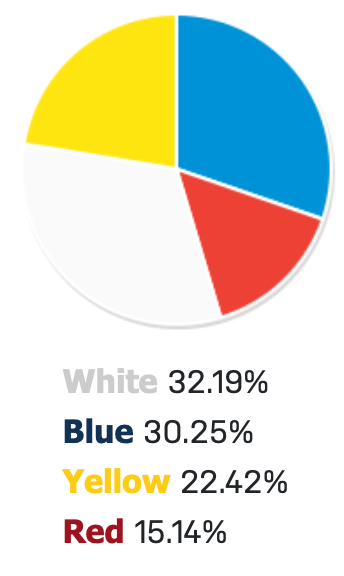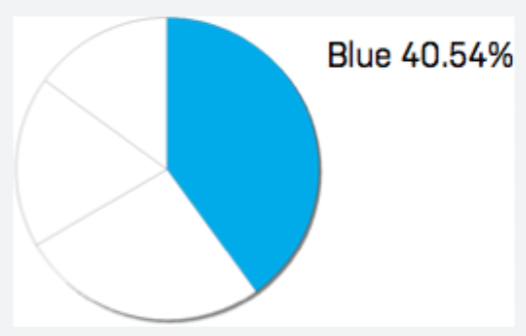

Blue Core Motive
Connection

White Core Motive
Peace

Red Core Motive
Power

Yellow Core Motive
Fun
The Color Code personality science offers a fantastic tool to learn to understand yourself and others better while adapting your communication style to connect productively. This personality assessment stands out as the most precise, all-encompassing, and user-friendly personality assessment available.
Distinguishing itself from other personality tests, the Color Code isn’t a pass-fail matter. Its primary purpose is to assess, not test, your personality. The Color Code goes beyond merely identifying your actions; it delves into the reasons behind your behavior, providing profound and practical insights into your motivations and those around you.
Suppose you desire to enhance any relationship, gain an edge in your professional environment, or deepen your self-awareness. In that case, we encourage you to take our personality assessment and experience the benefits of Color Code today!
Below is a summary of the foundation of The Color Code personality science. Dr. Hartman spent over 36 years researching and testing The Color Code Personality Assessment to help you understand and identify your core (primary) motive and full personality type. You will discover your strengths and limitations and drive the core motive, which represents why you do what you do.
The Driving Core Motives
While other personality profiles primarily focus on measuring your behaviors, they only scratch the surface of your personality. The Color Code Personality Assessment goes beyond mere identification of your actions; it aims to help you comprehend the underlying reasons behind your behavior.
There are four driving core motives, and while this might initially sound simplistic, consider the following observation: The human face has a limited number of variables (eyes, nose, mouth, chin, etc.), yet there exists an infinite variety of faces within the human race. Just as no two faces are exactly the same, even when "restricted" to only four driving core motives, no two personalities are identical. The Color Code Personality Assessment does not categorize people into four distinct groups, but rather seeks to identify what motivates individuals.
The following section provides a brief description of each of the four colors to establish a foundational understanding for further exploration. This will serve as a basis as we continue through your report.
BLUES
Driving Core Motive (Connection)
Being motivated by connection means that Blues strongly desire to establish deep and meaningful relationships with others. They value authenticity and genuineness, often reacting strongly against those who are fake or superficial. Blues prioritize truth, integrity, loyalty, and sincerity in their relationships. As they seek genuine and intimate connections, they tend to have a small circle of true friends.
Blues require understanding and appreciation from others. They prioritize quality in everything they do and exhibit loyalty as friends, employers, and employees.
WHITES
Driving Core Motive (Peace)
Being motivated by peace means that Whites prioritize inner harmony and balance, going beyond the absence of conflict. Disrupting their sense of equilibrium is something Whites actively avoid, often changing the subject when confronted with topics that make them feel insecure. They strive to maintain a sense of tranquility within.
Whites value independence and kindness. They have a strong aversion to confrontation and will go to great lengths to avoid it. They require solitude and reject attempts at control from others. Whites prefer to do things in their unique way and on their timeline.
REDS
Driving Core Motive (Power)
YELLOWS
Driving Core Motive (Fun)
Take The Color Code Personality Assessment
Get Your Full Results


Take The Color Code Personality Assessment
Get Your Core Color Only
CORE RESULT ONLY

ANSWERS TO COMMON QUESTIONS
Regarding answer selection when taking the profile, not every question on the profile will apply to every person, but that is considered in the profile scoring. Hopefully, for most of the questions, there is one answer with which you identify the strongest—that is the answer you should choose. Typically, your gut instinct is correct. If there are two choices you find yourself conflicted over, that's normal. It could be that you have a secondary color (which you will learn more about in the Comprehensive Analysis) or have developed or learned one of the traits. At the same time, the other comes naturally to you.
We are looking for the one that comes naturally to you. In identifying your Driving Core Motive, we want to know your natural/innate strengths and limitations, not your learned/developed ones. We advise you to choose the answer that feels most NATURAL to you, even if you also identify with some of the other choices.
None of the choices speaks to you regarding some questions. Again, only some questions will have a perfect answer for every person—we factor that in when we score the profile results. Pick the choice that feels the MOST like you, even if you hardly identify with it. If this happens on just a handful of questions, it shouldn't affect your results.
Regarding answering the questions from your childhood perspective, the Color Code Personality Model is motive-based. Most other popular personality assessments are behavior-based. The difference between the two is that the Color Code goes deeper—it explains why you do what you do (motive) rather than just identifying what you do (behavior).
The Color Code theory states that each of us has a Driving Core Motive—the reason we do everything in life. Our Driving Core Motives are innate—they came with us at birth. That is why we advise you to take the profile from your earliest childhood memories of yourself. The theory is that that is when you were most faithful to your Driving Core Motive before outside influences began affecting your behaviors.
For most people, their "childhood self" is the easiest way to identify how they naturally are. The profile is designed to be taken from your earliest recollections of yourself. The idea is to complete the profile by considering yourself before outside factors influence you.
We want to identify your personality before you felt pressured to be a certain way, learned to value some characteristics more than others, etc. For most people, the easiest way to do that is to think of themselves as a child—before they were aware of their personalities.
If you had difficulty answering from your childhood perspective, we recommend that you think of yourself when you've been most comfortable with yourself—when you felt most faithful to yourself—instead of acting how outside influences wanted you to act. When answering the questions, think about your very most natural, innate gut instinct—what would you do if nothing from the outside were influencing your decision?

